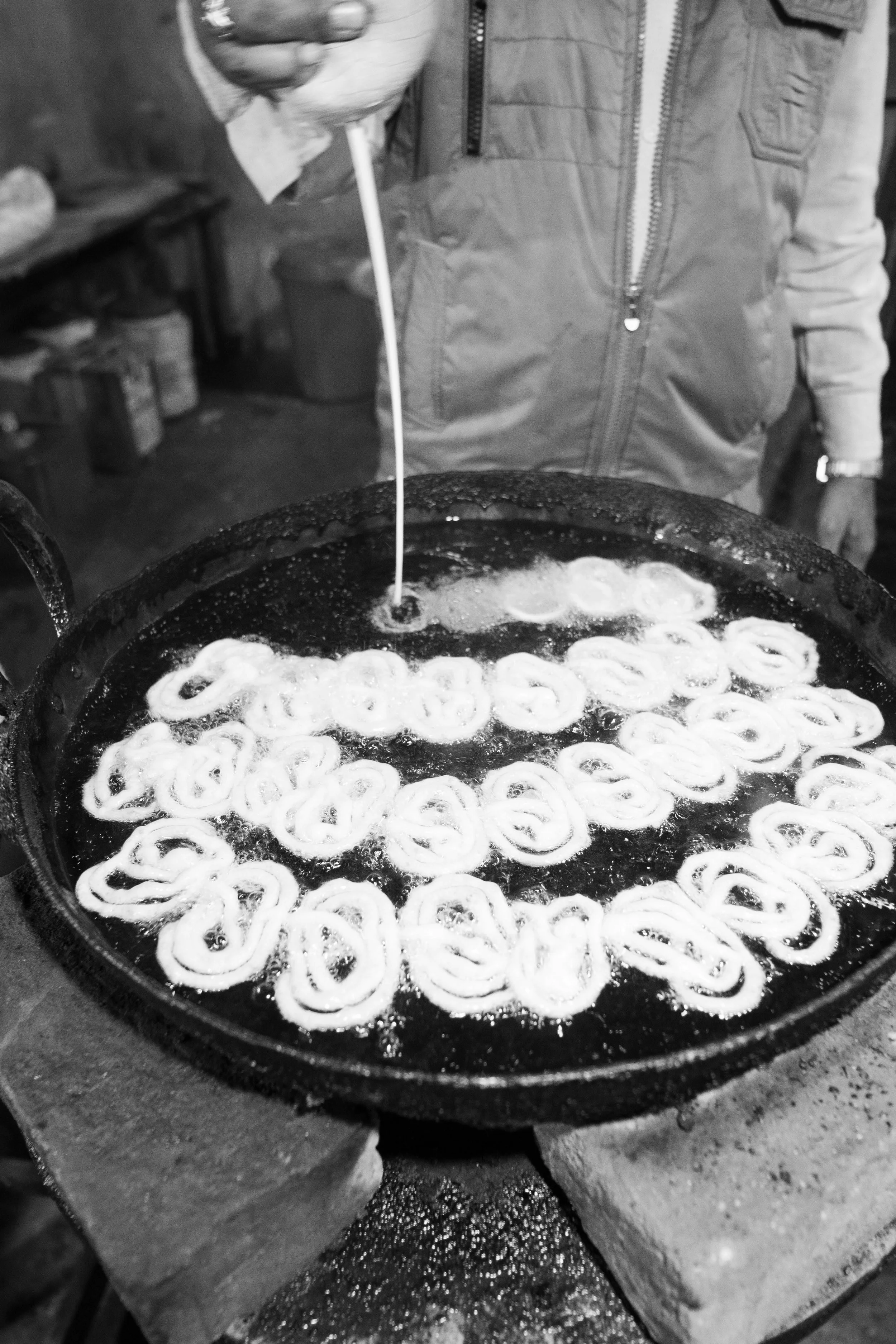From Zulbiya to Jalebi: The Tale of An Indo-Persian Culinary Affair
A Sweet Born of Travel
From morning breakfasts to wedding spreads, jalebi is an iconic dessert that shows up everywhere in India. Its crisp, syrup-soaked swirls are comfortingly familiar—but few know that this desi favourite has roots far beyond the subcontinent.
Its origins lie in medieval Persia, where it was known as zulbiya—a dish that travelled centuries and empires before becoming the jalebi we know today.
From Persian royal courts to street corners of India, the story of jalebi is one of trade, transformation, and timeless taste.
Age-Old Trade, Cultural Crossings
Four thousand years ago, the Harappan civilization in India and the Mesopotamian civilization near the Persian Gulf were already exchanging goods—copper, gems, textiles—across thriving maritime routes.
Trade was just the beginning. By the medieval era, Indo-Persian cultural exchanges grew deeper. Persian scholars, artisans, and merchants brought with them philosophies, aesthetics, and flavors that began to embed themselves in Indian life and cuisine.
The First Recipe
The earliest mention of zulbiya appears in a 10th-century Arabic cookbook, Kitab al-Ṭabīkh by Ibn Sayyar al-Warraq. By the 13th century, a similar version was documented in Persian culinary texts by Muhammad bin Hasan al-Baghdadi.
Zulbiya was traditionally prepared during the holy month of Ramadan. A batter of flour, cornstarch, and yogurt was deep-fried in ghee, then dipped in a luxurious sugar syrup scented with saffron and rose water. Its distinctive spiral pattern mirrored the finesse of Persian design—ornamental, intricate, and indulgent.
Royal Adoption in India
As the Delhi Sultanate and later the Mughal Empire flourished from the 13th to 19th centuries, the cultural exchange between Persia and India reached its peak. Persian culinary sensibilities entered royal kitchens.
Zulbiya evolved in Indian hands, appearing in Jain and Sanskrit texts under names like kundalika and jalavallika. These were early linguistic iterations of the modern word jalebi.
At first, this deep-fried sweet remained exclusive to the upper echelons of society. Ghee, saffron, and rose water were luxuries—reserved for the nobility. But by the 17th century, the spiral treat had begun to escape the palace walls.
From Royal Kitchens to Local Bazaars
Religious institutions—temples, gurdwaras, dargahs—began offering jalebi to devotees as a sacred treat. It became part of community kitchens, served fresh and hot from large cauldrons of oil.
To make it more accessible, the recipe was simplified. Ghee was replaced by groundnut oil. Saffron and rose water, once integral to the syrup, were omitted in favor of cheaper, more available ingredients.
In the 19th century, a major drop in sugar prices due to surplus harvests in Bengal and Bihar helped jalebi become a mass-market delicacy. Vendors began selling it in stalls across bazaars and railway stations. Easy to make and even easier to preserve, jalebi embedded itself into India’s everyday street food culture.
Regional Expansion and Global Prominence
Over time, regional variations blossomed. Odisha and Bengal’s chhena jalebi uses cottage cheese, resulting in a softer, creamier bite. North India’s imarti, made with urad dal batter, stays close to the Persian original in shape and syrup. Gujarat’s jalebi-fafda and Madhya Pradesh’s poha-jalebi offer unique sweet-savory contrasts. Each variant reflects its regional cuisine, spices, and tastes.
Today, jalebi enjoys global recognition. Whether served with rabri in old Delhi, over a breakfast thali in Ahmedabad, or at Indian restaurants abroad, it continues to carry centuries of history in every bite.
A Spiral That Connects Worlds
The journey of jalebi is more than just culinary—it’s cultural. It’s the story of trade routes and empires, languages and rituals, adaptation and memory. From the courts of Baghdad to the lanes of Banaras, this sweet spiral has traveled far.
Here’s to jalebi—golden, sticky, and eternal.

